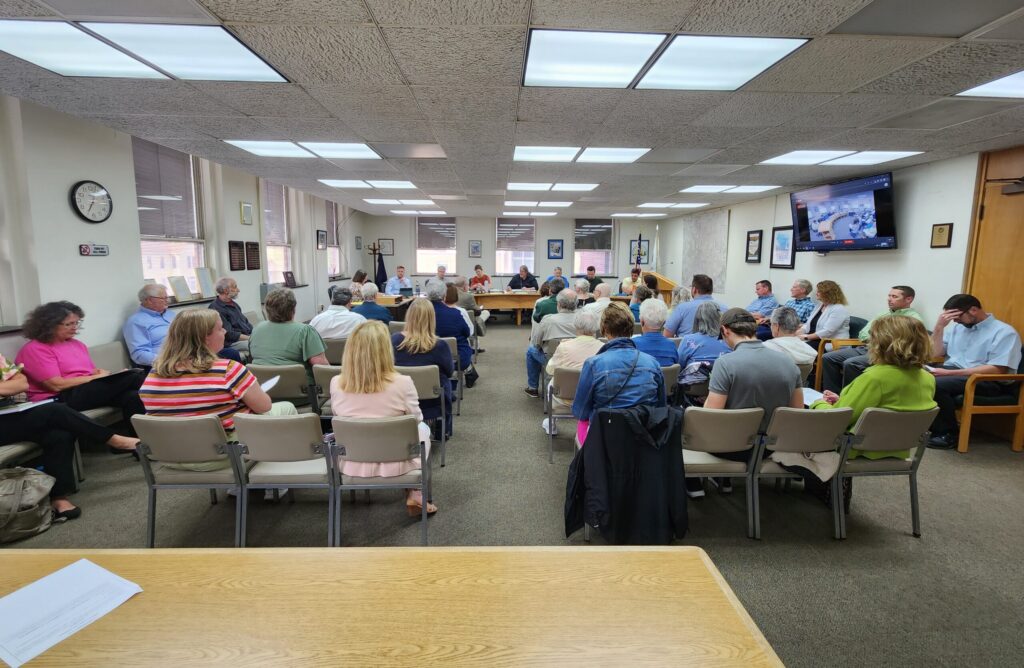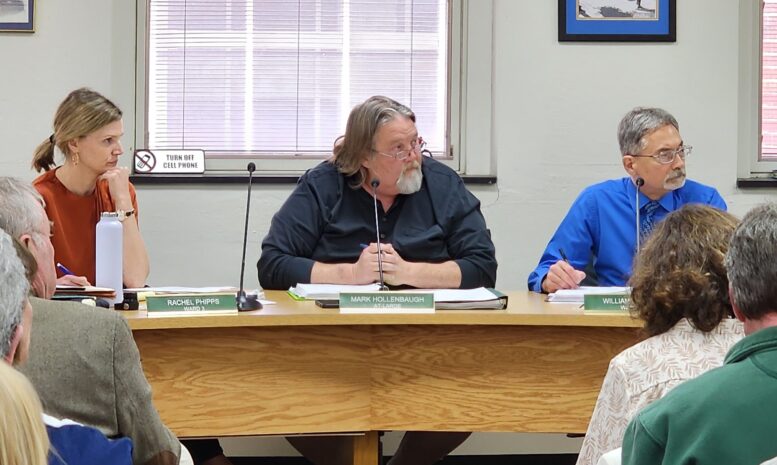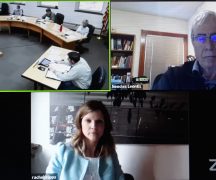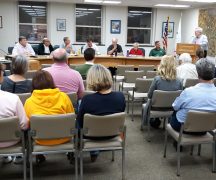By JAN LARSON McLAUGHLIN
BG Independent News
Months of pleading and petitioning to protect their historic neighborhoods has paid off for Bowling Green residents.
The crowded council chambers erupted into applause Monday evening when the provision allowing single family homes to be divided into duplexes was tossed from the city’s zoning code update.
Much of the city’s zoning code update progressed with little fanfare – primarily cleaning up provisions that were outdated and stood in the way of healthy development.
But two main provisions in the Pedestrian Residential blocks around the downtown area did not sit well with residents.
Council had already been convinced to remove the other most objectionable portion of the zoning code update – by limiting the type of businesses that could locate in those neighborhoods.
After hearing from more citizens at the beginning of the meeting, council considered 19 amendments to the zoning code ordinance. When Council member Bill Herald made the motion on the duplexes, other members joined.
Council member Nick Rubando said the theory that “market forces” will lead to properties being well maintained has proven false in Bowling Green. And residents in the older neighborhoods have lived with that reality.
“I think it’s important we listen to our constituents,” Rubando said.
Council member Jeff Dennis, initially a supporter of the two-unit dwelling provisions, said residents lack confidence in the city to properly enforce the zoning code and nuisance ordinance. Now is a time to rebuild that trust.
“I appreciate we have a lot of plans to increase enforcement,” Dennis said.
Council member Rachel Phipps also accepted the amendment, though she believes the two-unit dwellings would help solve some housing issues in the city.
“I continue to believe that permitting them would benefit neighborhoods, the downtown, the community,” Phipps said. “But I have failed to convince others of that.”
Phipps said council and the city administration have more work to do on code issues like:
- Beefing up enforcement.
- Partnering with community organizations on beautification efforts.
- Continuing work on historical districts.
- Making progress on rental registrations, and working on proactive enforcement.
Council member Greg Robinette said the city still needs to work to increase its single-family housing stock. He said allowing duplexes in the neighborhoods around the downtown would be “counter to that effort.”
Robinette praised the effort on the zoning code, saying the update is clear, easier to use, supportive to economic development, and “long overdue.”

Dennis also complimented the efforts of the planning office and others involved. “It’s been a long process with a lot of back and forth and compromise, but the result is a zoning code we can all be proud of.”
Herald thanked the citizens, who became regular attendees at council meetings.
“It’s heart-warming what has transpired,” he said. “The community has become energized. The system we use at the local level works.”
Prior to debating the 19 proposed amendments – which dealt with issues like dog parks and design standards (a story will appear later this week on those topics) – council heard again from several citizens.
Eric Peck offered the perspective of a BGSU graduate who was part of the “pipeline between the university and town” and decided to buy a home in Bowling Green.
“I fell in love with the culture,” the historic landmarks and the downtown, he said. But Peck said turning single family homes into duplexes would have “grave consequences.”
Joe DeMare said the zoning update was another example of the “weakening of democracy in Ohio.”
“We brought in a consultant from out of town and he told us what we should do,” DeMare said.
David Drain told council that he had compared the city’s data on rental unit registrations to the number of actual rentals in an area. He said there were 148 rental units not registered – and enforcing the fines could collect $37,000 a week.
“I think we should enforce that law,” Drain said.
Drain did praise the city for improving its process for reporting nuisance properties. “You should expect a flood” of complaints once people start using the process, he said.
David Pfleger said many of the older neighborhoods are already overcrowded, and the city has been cautioned by a consultant that it needs to preserve those areas. Meanwhile, the housing stock continues to decline, he said.
“The market forces do not work,” Pfleger said.
But Pfleger also praised the city for responding to his recent nuisance complaints about rental properties.

Suzanne Midden said the opinions of homeowners in the historic areas should count.
“We feel our wishes should be of utmost importance,” she said. Rentals are spreading blight, she added.
“Zoning is supposed to protect neighborhoods from exploitation,” Midden said.
Rose Drain told council that the citizens of the historic neighborhoods were taking steps to form a Community Development Corporation to increase the number of affordable single-family homes and improve rental conditions.
Mayor Mike Aspacher spoke after the citizens, expressing his appreciation to all who worked on the zoning code update.
“Here we are. It’s been a lengthy process,” he said. “This demonstrates how the democratic process can and does work.”
Aspacher said he supported the zoning code update as proposed, saying it reflects the city’s goals of modernizing the planning processes, making it more user friendly, and serving as an economic development tool.
The mayor also acknowledged the “legitimate concerns” expressed by citizens about poor housing conditions, and said he supports a review of the city’s nuisance laws.
“I’ve been saying this for a long time,” Aspacher said. “It’s going to take a lot of work.”





